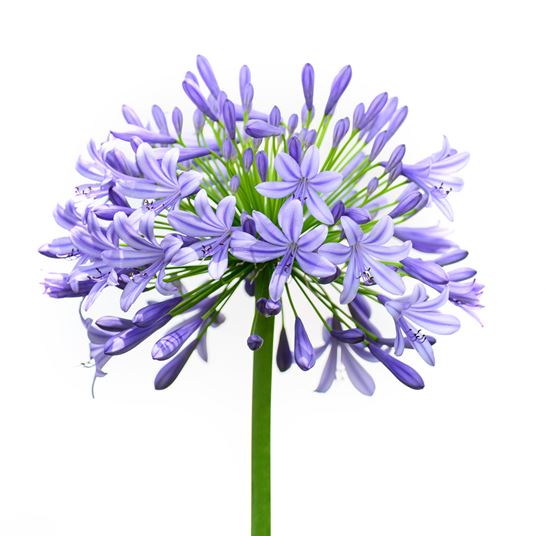Agapanthus Care Tips for Lush and Vibrant Flowers
Agapanthus Care Tips for Lush and Vibrant Flowers
Blog Article
Mastering the Art of Agapanthus Treatment: Crucial Actions for Healthy Development and Vivid Blooms
In the realm of horticulture, the growing of agapanthus stands as a satisfying endeavor for those that look for to support these elegant flowering plants. With their striking blossoms and stylish vegetation, agapanthus has actually recorded the interest of garden enthusiasts worldwide. Nevertheless, attaining optimum growth and vibrant blossoms requires a nuanced approach that includes numerous important actions. From picking the best variety to understanding trimming strategies, the trip towards growing flourishing agapanthus plants is multifaceted and holds the vital to opening the full capacity of these organic treasures.

Choosing the Right Agapanthus Selection

When selecting the best Agapanthus selection for your garden, consider variables such as environment viability, blossom color, and growth behavior. Agapanthus, typically referred to as Lily of the Nile or African lily, is available in a range of shades varying from tones of purple and blue to white. Choose a flower color that matches your existing garden palette to create an unified landscape. Furthermore, think about the environment in your region to make sure the Agapanthus range you choose can prosper in your certain conditions. Some varieties are a lot more tolerant of cold temperature levels, while others like warmer climates. Recognizing the growth behavior of different Agapanthus varieties is important for correct positioning within your yard. Some ranges have a clumping development routine, suitable for containers or borders, while others have an even more dispersing nature, appropriate for ground cover or mass plantings. By thoroughly reviewing these elements, you can choose the excellent Agapanthus range to boost the appeal of your garden.
Perfect Growing Conditions
Considering the ideal ecological demands is important for successful Agapanthus farming. Agapanthus thrives in well-draining dirt with a somewhat acidic to neutral pH level. When planting, select a location that obtains complete sunshine to partial color. In hotter climates, supplying some mid-day color can avoid scorching of the leaves. Agapanthus plants are sensitive to cold temperatures and must be protected from frost throughout winter season.
To guarantee healthy development and dynamic flowers, plant Agapanthus bulbs at a deepness of concerning 2-4 inches and room them 8-12 inches apart. Mulching around the base of the plants aids preserve dampness and subdues weed development.
Watering and Fertilizing Tips
Maintaining proper wetness degrees and offering crucial nutrients are crucial components in the treatment routine for Agapanthus plants. When it comes to watering Agapanthus, it is vital to strike a balance. These plants like constantly damp dirt but are susceptible to root rot if overwatered.
Fertilizing Agapanthus is necessary for promoting healthy growth and respected flowers. Use a balanced plant food, such as a 10-10-10 formula, in the early spring as brand-new growth emerges. Repeat this application every 6-8 weeks throughout the expanding season. Avoid excessive fertilization, as it can bring about lavish vegetation at the expense of flowers. Always adhere to the producer's instructions for proper dilution and application methods. By complying with these watering and feeding suggestions, you can guarantee your Agapanthus plants grow and generate lively, lasting blooms.
Pruning Techniques for Agapanthus
Trimming Agapanthus plants at the suitable times and with appropriate methods is critical for keeping their wellness and promoting ideal growth and blooming. The optimal time to prune Agapanthus is in late wintertime or early springtime before brand-new growth emerges.
For flowered stems, wait up until the flowers have actually perished and afterwards trim them back to the base. This not only cleans up the plant's look however also encourages the advancement of brand-new flower buds. Deadheading spent blossoms can likewise redirect the plant's power into generating even more blooms as opposed to establishing seeds. Nonetheless, if you wish to accumulate seeds for propagation, leave some flowers to fully grown and completely dry on the plant.
Bear in mind to make use of clean, sharp tools to make exact cuts and decrease the threat of presenting illness. Agapanthus. Normal trimming will certainly aid keep your Agapanthus looking neat and healthy while guaranteeing an abundant screen of gorgeous blossoms
Taking Care Of Typical Bugs and Illness
After guaranteeing correct trimming strategies for Agapanthus, it is necessary to attend to common pests and illness that can affect the health and wellness and vitality of these plants. One usual pest that impacts Agapanthus is the Agapanthus gall midget.
An additional usual problem is fungal fallen leave area, which presents as dark lesions on the fallen leaves. To stop fungal diseases, make certain good air circulation around the plants, avoid overhead watering, and remove any kind of contaminated leaves promptly. Additionally, Agapanthus plants can suffer from root rot if they are planted in badly draining pipes dirt. To stop this, plant Agapanthus in well-draining dirt and stay clear of overwatering. check my site By being alert and taking prompt action against bugs and diseases, you can assist your Agapanthus plants grow and create vibrant flowers.

Verdict
In conclusion, grasping the art of agapanthus care entails picking the appropriate selection, giving suitable growing conditions, correct watering and fertilizing, proper trimming techniques, and dealing with common Clicking Here pests and illness. By adhering to these necessary steps, you can make sure healthy development and dynamic flowers for your agapanthus plants. Remember to regularly monitor and maintain your plants to advertise their overall health and durability.
To make sure healthy growth and dynamic blossoms, plant Agapanthus bulbs at a deepness of regarding 2-4 inches and room them 8-12 inches apart. By following these watering and feeding pointers, you can guarantee your Agapanthus plants grow and create lively, durable flowers.
One usual pest that affects Agapanthus is the Agapanthus gall midget. In addition, Agapanthus plants can endure from origin rot if they are planted in poorly draining dirt. By look at these guys complying with these necessary actions, you can make certain healthy growth and vivid blossoms for your agapanthus plants.
Report this page